Isabella Stewart Gardner had a deep love of horticulture that once extended to her suburban estate just outside of Boston, called Green Hill. There she had 40 acres of lush gardens with decorative objects sprinkled throughout. Alongside marble sculptures of mythological figures and ancient ceramic vessels, there were several pieces carved to look like baskets of fruit. These are seen in archival photos perched atop a long ivy-covered wall.
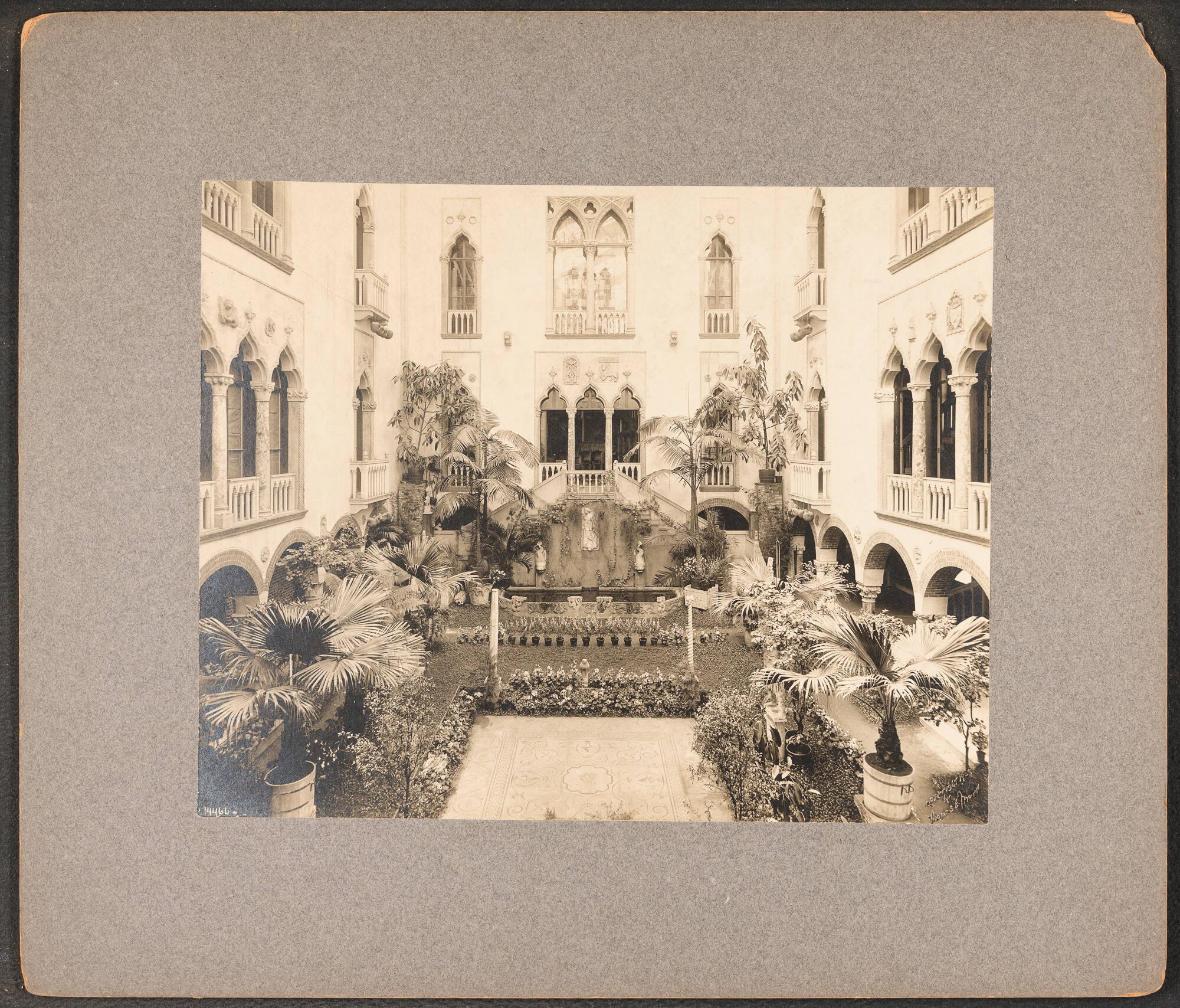
Isabella Stewart Gardner Museum, Boston (ARC.008393). Photograph showing the Courtyard in 1915.
Thomas E. Marr (Nova Scotia, 1849 - 1910, Boston), Eighteen Photographs of the First Floor, Fenway Court, Boston, 1915. Gelatin silver print
Sculptures at the Green Hill Estate
The intermixing of sculpture and horticulture at the Green Hill estate may have influenced Gardner’s approach to designing the Museum’s courtyard. From its opening in 1903 to her death in 1924, Gardner continually added to, rearranged and carefully curated each of her galleries. The central Courtyard was no exception. In fact, it’s one of the spaces that changed the most and continues to change today. Filled with trees, plants and flowers that bloom and energize the space year round, it is in a constant state of flux.
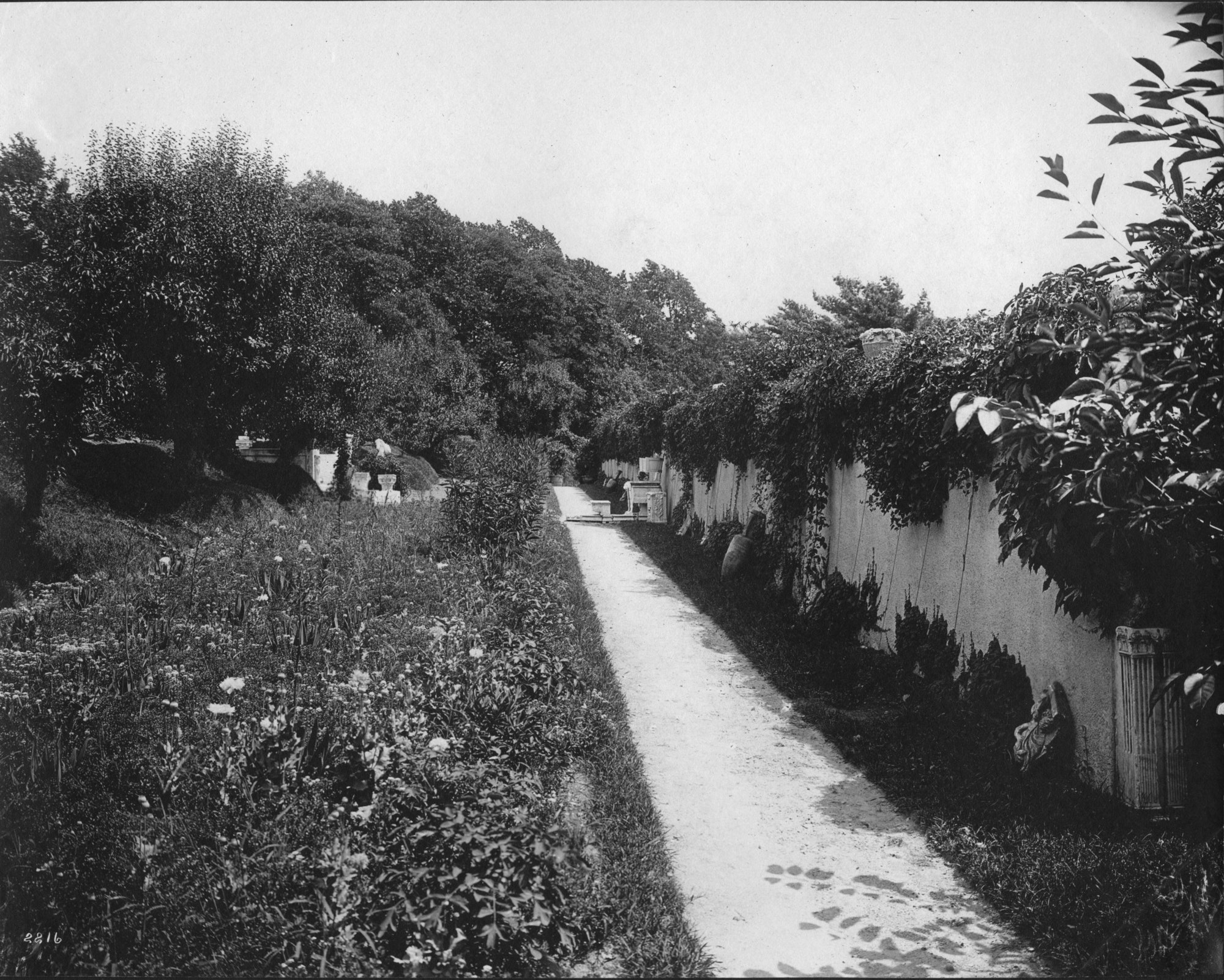
Isabella Stewart Gardner Museum, Boston (ARC.007405). Photograph showing the fruit basket sculptures atop a long ivy-covered wall at Green Hill in Brookline, MA.
Thomas E. Marr and Son (active Boston, 1910-1942), Fifty-four Photographs of Green Hill, Brookline, Massachusetts, 1900-1905. Gelatin silver prints
Over the years, Gardner moved many sculptures from Green Hill into the galleries of her museum. Later photos show some of the stone fruit baskets from her Green Hill home playfully positioned amongst the plants in the Courtyard.
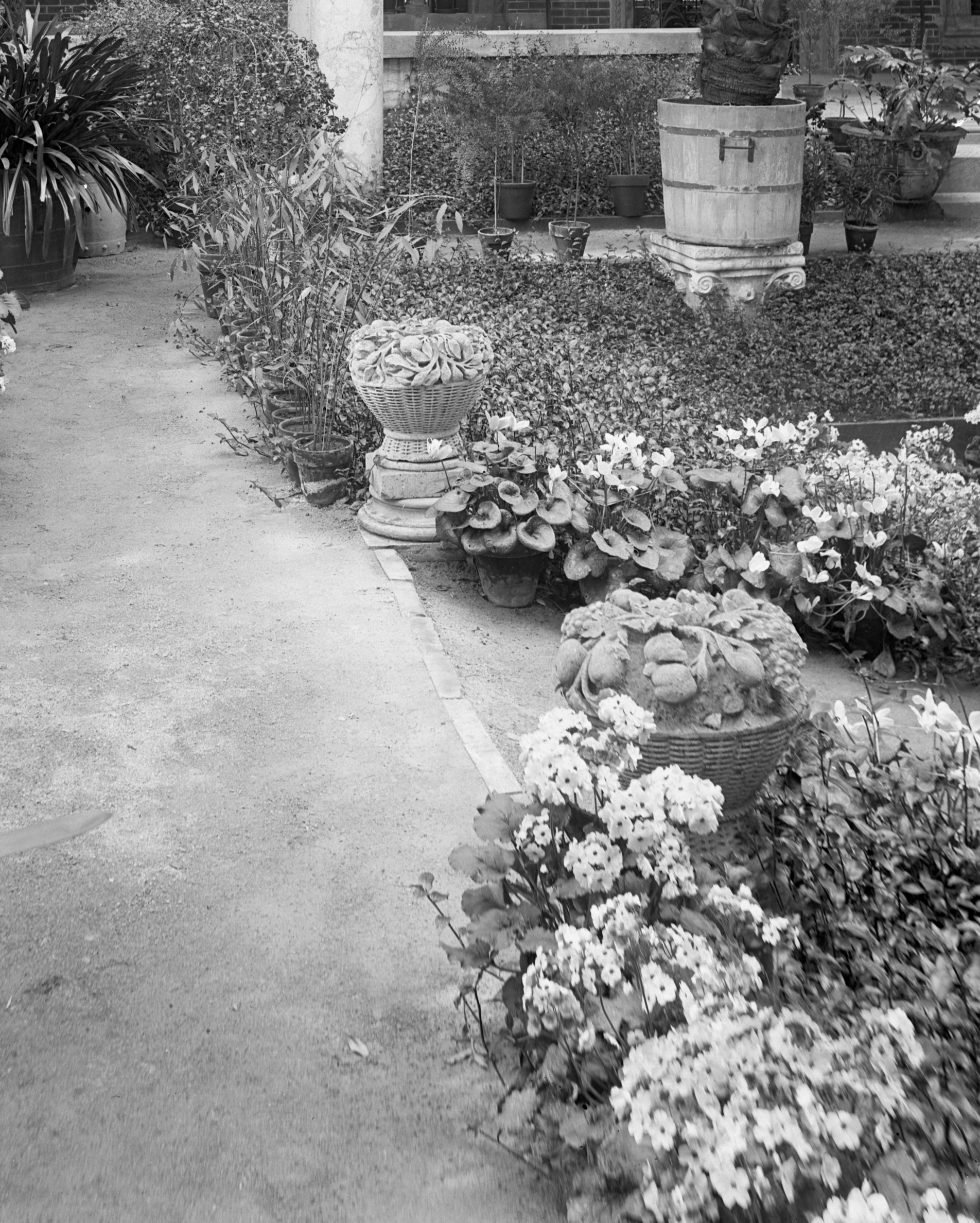
Isabella Stewart Gardner Museum, Boston. Photo: Thomas E. Marr and Son
East view of the Courtyard showing the fruit baskets, 1915.
Isabella’s Fruit Baskets; From Venice to Boston
Four of these fruit baskets–often referred to by their French name corbeilles de fruit–were purchased by Gardner in Venice in 1897. They appear overflowing with grape bunches, pomegranates, apples, pears, and interspersed foliage that were likely shaped with a variety of traditional stone carving tools, such as chisels, drills, rasps and files. Gardner positioned them on top of pedestals, anchoring the front corners of the Courtyard path. For some unknown reason, the baskets were moved in the years after her death to the steps on either side of the Courtyard fountain. They sat there gathering dust until recent research confirmed their original location. Our conservation team set out to clean them.
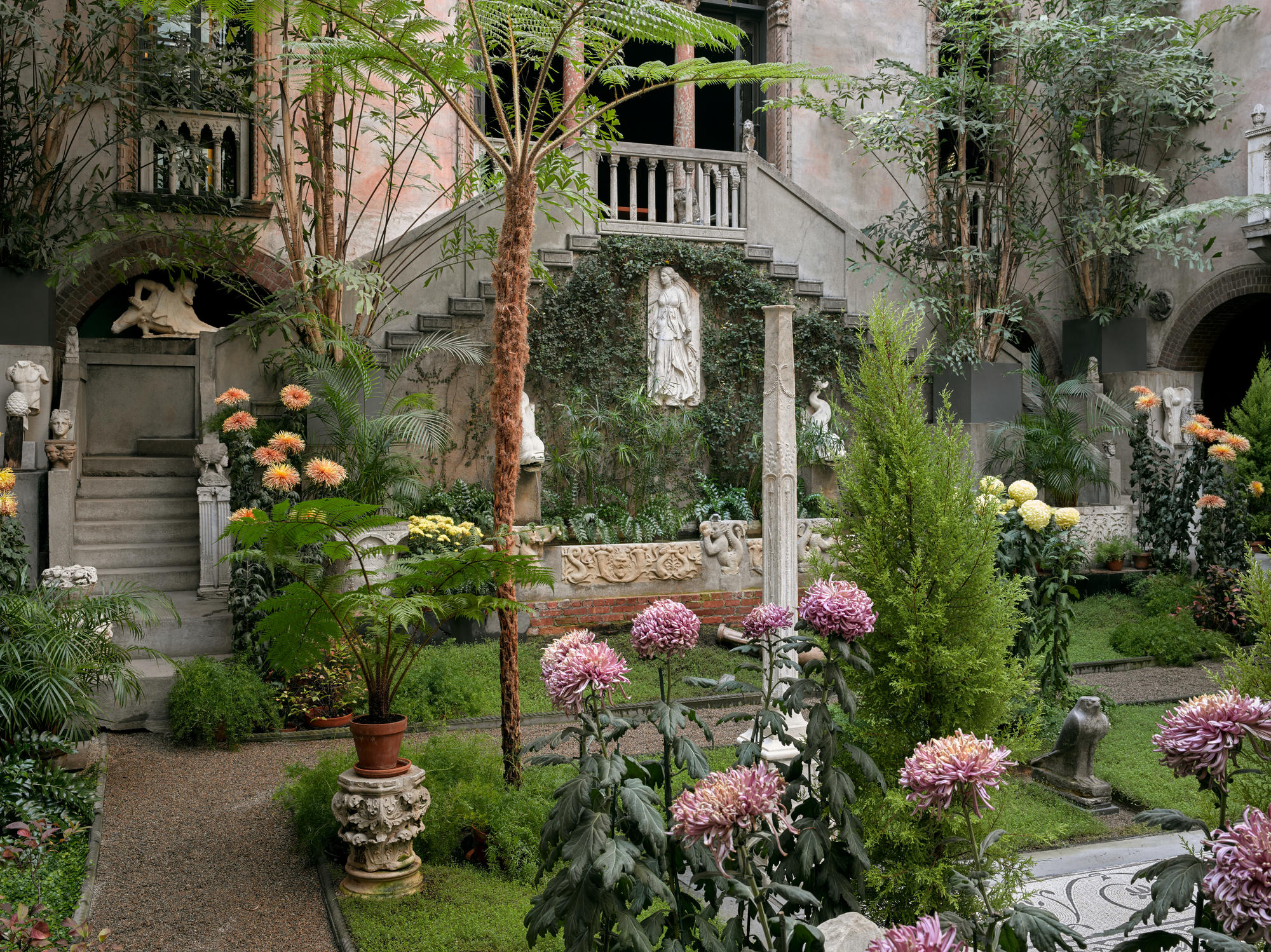
Isabella Stewart Gardner Museum, Boston. Photo: Sean Dungan
The challenge the conservators faced was how to clean the stone surfaces that heavily eroded after years of exposure. Many traditional cleaning methods could cause further damage to the fragile and porous stone. Therefore, our conservators used a specialized laser that targets the dirt and stains but does not affect the stone itself. The laser energy, emitted in pulses, is absorbed well by the grime, which breaks up into small particles and is then suctioned away. The hard stone, by contrast, reflects the laser energy and is left untouched. Once cleaned, many details of these sculptures, such as the basketry patterns, have become more visible. The stone fruit baskets are now ready to make a debut after being cleaned and restored to reveal much of their former splendor. You can watch a video here of the cleaning process.
In the Fall of 2022, visitors will see the four fruit baskets reinstalled at the front of the Courtyard giving our visitors a better view of these fun sculptures, showcasing Isabella’s original intent for their display.
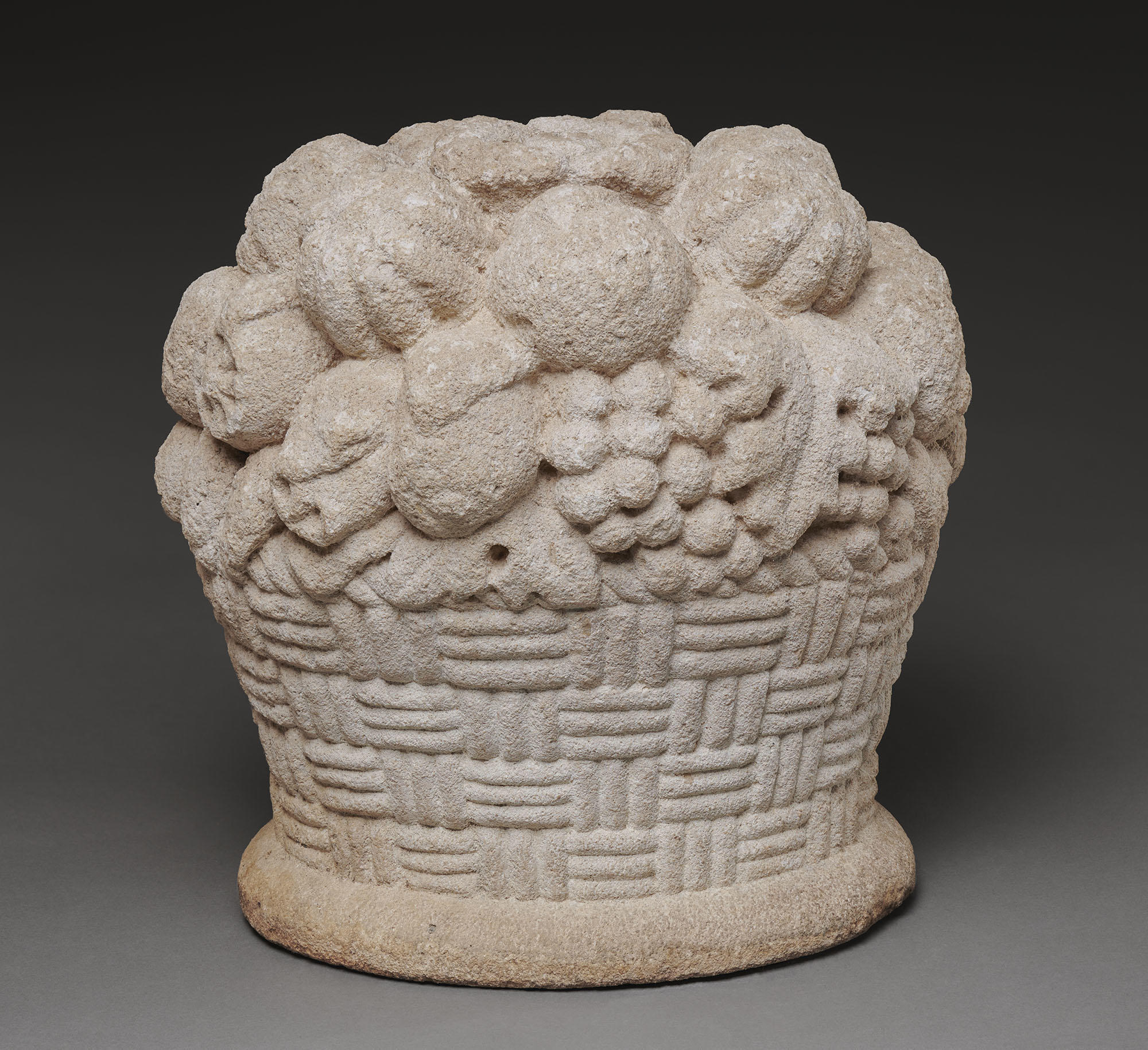
Isabella Stewart Gardner Museum, Boston (S5s27). The sculpture after cleaning.
Basket of Fruit, 19th century. Carved limestone, 38.1 x 30.5 x 36.8 cm (15 x 12 x 14 1/2 in.)
The author would like to thank her colleagues Jessica Chloros, Ellen Promise and Greta Llanes for their help with this post and work on the fruit baskets.

Learn more about our conservation department
Conservation at the Gardner Museum

More about the courtyard and seasonal floral displays
The Courtyard

Explore the Collection
Basket of Fruit, 19th Century